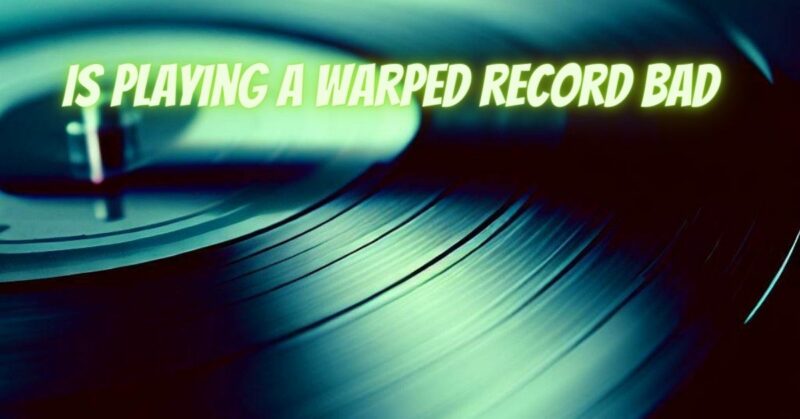In the world of vinyl playback, the allure of analog sound and tactile engagement draws enthusiasts into a realm of sonic wonder. However, this world also presents challenges, and one of the common dilemmas vinyl enthusiasts face is encountering a warped record. The question arises: Is playing a warped record bad? In this article, we’ll delve into the pros and cons of playing a warped record, exploring the potential impacts on sound quality and the health of your vinyl collection.
Understanding Warped Records:
A warped record is one that has developed a physical distortion, causing a noticeable curve or bend in the vinyl disc. Warping can occur due to various factors, including exposure to heat, improper storage, or manufacturing defects.
Pros of Playing a Warped Record:
- Exploring Unique Sound: In some cases, playing a slightly warped record can result in unique sonic effects. The undulating grooves may create subtle variations in pitch or tone, leading to an unconventional listening experience.
- Nostalgic Charm: For collectors and enthusiasts, playing vintage records with minor warps can evoke a sense of nostalgia, capturing the character of the record’s history.
- Potential Playability: Some records with mild warps can still be playable without causing major issues. The stylus may navigate the grooves with minimal disruption.
Cons of Playing a Warped Record:
- Tracking and Sound Quality: Warped records can pose challenges for the stylus as it tracks the grooves. Uneven tracking can result in fluctuations in sound quality, including distortion, skipping, or sibilance.
- Stylus Wear: Playing a warped record can increase wear on the stylus. As the stylus navigates the undulating grooves, it encounters irregular stress, which may accelerate wear and potentially compromise the stylus’s lifespan.
- Potential Damage: In extreme cases, severe warping can lead to the stylus jumping out of the groove, causing damage to both the stylus and the record. The potential for damage increases with more severe warping.
Navigating the Decision:
- Visual Inspection: Before playing a warped record, visually inspect it for the severity of the warp. If the warp is extreme or causing the stylus to visibly skip, it’s best to avoid playing the record.
- Gentle Tracking: If you choose to play a slightly warped record, use a gentle tracking force setting on your turntable to minimize the stress on the stylus.
- Monitoring Sound: Pay close attention to the sound quality while playing a warped record. If you notice significant distortion, skipping, or other anomalies, it’s advisable to stop playback.
Preventing Warping:
- Storage: Proper storage of vinyl records is crucial to prevent warping. Store records upright in a cool, dry place, away from direct sunlight and heat sources.
- Cooling Down: Allow records to cool down to room temperature before playing them, especially if they’ve been exposed to heat.
Playing a warped record is a decision that involves weighing the potential sonic experiences against the risks of stylus wear, tracking issues, and potential damage. While some collectors may embrace the charm of playing vintage records with minor warps, it’s important to be cautious and attentive to the condition of the record and the performance of your stylus. Regular inspection, proper storage, and careful tracking force adjustments can help you navigate the world of warped records and maintain the health of your cherished vinyl collection.


